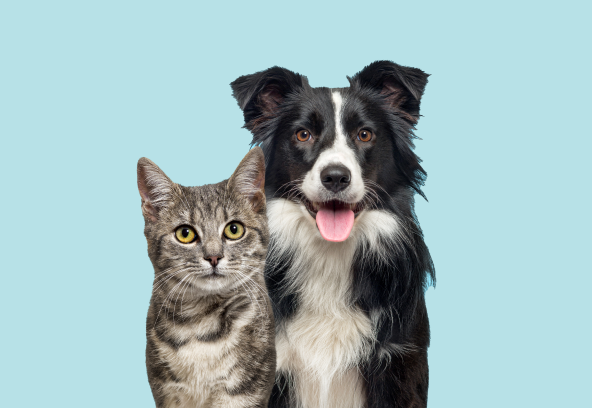A cat’s eyes are one of its most striking features. Their mesmerizing pupils, vivid colors, and intense gaze are captivating. However, beyond their beauty, a cat’s eyes are also an essential indicator of its overall health. Ensuring your feline friend has healthy eyes requires routine care, observation, and quick action if something seems amiss.
In this guide, we’ll walk you through how to properly care for your cat’s eyes, identify signs of potential problems, and take preventive steps to maintain your pet’s ocular health.
Signs of Healthy Cat Eyes
A cat’s eyes should always appear clear, bright, and free from any swelling, redness, or excessive discharge. Other signs of healthy eyes include:
- A moist, glossy appearance without cloudiness
- No excessive tearing or mucus build-up
- Pupils of equal size that respond normally to light
- No squinting, rubbing, or excessive blinking
Since cats are prone to various eye conditions, keeping an eye on their eye health is an essential part of being a responsible pet owner.
Daily Eye Care for Cats
Regular eye care can help prevent infections and ensure your cat’s eyes remain in top shape. Here are a few simple ways to care for your cat’s eyes:
1. Keep the Eye Area Clean
One of the easiest ways to maintain your cat’s eye health is by keeping the area around their eyes clean. Mucus and debris can accumulate around the corners of the eyes, leading to bacterial growth and potential infections. To clean your cat’s eyes safely:
- Use a soft, damp cloth or cotton ball soaked in warm water.
- Gently wipe away any discharge, always wiping outward from the corner of the eye.
- If necessary, use a vet-approved sterile eyewash or specially formulated wipes for cats.
Persian cats and other flat-faced breeds tend to have excessive tearing, which can lead to tear stains. Regular cleaning can prevent these stains from becoming permanent.
2. Monitor for Signs of Eye Problems
Cats are masters at hiding discomfort, so it’s essential to be vigilant about any changes in their eyes. Some common signs of eye problems include:
- Excessive tearing or discharge – This could indicate an infection, allergies, or blocked tear ducts.
- Redness or swelling – May be a sign of conjunctivitis or irritation.
- Cloudy or dull eyes – Can signal cataracts, corneal ulcers, or other serious issues.
- Frequent squinting or rubbing – Suggests discomfort, pain, or possible injury.
- Third eyelid visibility – The appearance of the third eyelid (a white membrane in the corner of the eye) can indicate illness or irritation.
If you notice any of these symptoms, a visit to the vet is recommended to diagnose and treat the issue before it worsens.
Administering Eye Drops and Ointments
Sometimes, your cat may require medicated eye drops or ointments due to infections or injuries. Administering these medications can be tricky, but with patience and the right technique, it can become a stress-free process.
Here are some steps to help you apply eye medications correctly:
1. Prepare Your Cat
- Choose a quiet area where your cat feels comfortable.
- Gently wrap your cat in a towel if necessary to keep them still.
2. Clean the Eye Area
- Before applying any medication, wipe away any discharge using a soft, damp cloth.
3. Applying Eye Drops
- Hold your cat’s head still and gently pull back the eyelid.
- Administer the prescribed number of drops into the eye.
- Allow your cat to blink naturally to distribute the medication.
4. Applying Eye Ointment
- Gently pull down the lower eyelid to create a small pocket.
- Apply a small strip of ointment along the edge of the eyelid.
- Massage the upper and lower eyelids together to spread the medication.
Always avoid touching the eye directly with the dropper or ointment tube, as this could introduce bacteria or cause further irritation.
Preventing Eye Infections and Irritations
While some eye conditions are inevitable, many can be prevented with good hygiene and proactive care.
1. Maintain a Clean Living Environment
- Dust, smoke, and strong chemicals can irritate your cat’s eyes. Keep their living space clean and free from irritants.
2. Regular Grooming
- Long-haired cats are more prone to eye problems due to fur blocking their vision and trapping dirt. Regularly trim excess fur around their eyes to prevent irritation.
3. Keep Their Eyes Safe
- Be cautious when using harsh cleaning products around your cat, as fumes and residues can cause eye irritation.
- Avoid letting your cat play with sharp objects or rough surfaces that could lead to eye injuries.
4. Annual Vet Checkups
- Regular vet visits ensure that any underlying health conditions affecting your cat’s eyes are detected early.
When to See a Veterinarian
If your cat shows persistent signs of eye irritation or infection, a trip to the vet is crucial. Delaying treatment could result in serious complications, including vision loss.
Seek veterinary help if:
- Your cat’s eyes are red, swollen, or producing yellow/green discharge.
- They are keeping one or both eyes closed frequently.
- There are noticeable changes in eye color, shape, or pupil size.
- They seem to be in pain or are excessively rubbing their eyes.
Conclusion
Your cat’s eyes play a crucial role in their overall well-being and should never be overlooked. By maintaining regular eye hygiene, being observant of any abnormalities, and seeking veterinary care when needed, you can ensure your feline friend enjoys a lifetime of healthy vision.
Next time you find yourself gazing into your cat’s captivating eyes, take a moment to check for any signs of irritation or illness. A little preventive care today can go a long way in keeping your furry companion happy and healthy!



